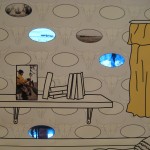A few months back (yes I am really slow with posting these days) we caught the closing reception of Constructing Fantasy at the Beacon Arts Building curated by the BAB director, Renée Fox – a really fantastic local sculpture show, in a space which has been doing a lot of fantastic things. Sadly, Renée told us that the gallery will be closing (by the time I got around to posting this it has closed) – though the studios throughout the rest of the building will of course remain. Perhaps another art space will move in there, and I hope Renée and the team behind the shows will continue to put on shows at some other venue. I only made it to a handful of the shows over there at Beacon Arts, but always found something I liked. This one in particular had a lot to like.
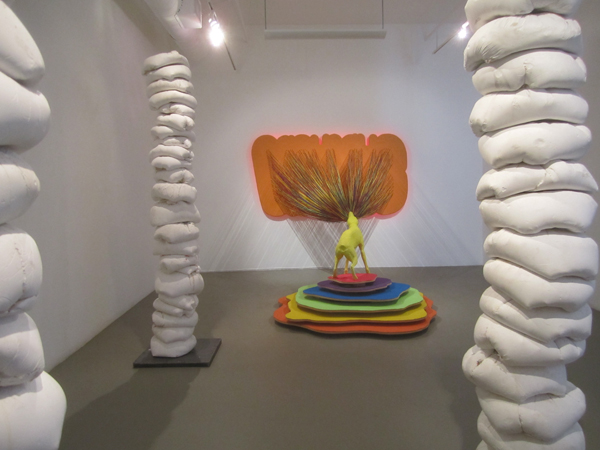
Vesuvius, Travis Novak (in background)
The Spirit, The Breath, The Flesh, Larissa James (foreground)

The Spirit, The Breath, The Flesh, Larissa James

Vesuvius, Travis Novak

Untitled #14, Jefferey Hastings (in background)

Go Hard, Eric Johnson

Go Hard, Eric Johnson

Go Hard, Eric Johnson

Untitled #14, Jefferey Hastings

Wind Blowing… Ripples Running, Snezana Petrovic

Just a Secular Babe, Catherine Fairbanks

Just a Secular Babe, Catherine Fairbanks

Slab 1, Pontus Willfors

Untitled, Catherine Fairbanks

Metrophonix, Winter Jenssen

Untitled, Sophie Lee

Untitled, Sophie Lee

Hatching, Rachel Kaster

Hatching, Rachel Kaster

Metrophonix, Winter Jenssen

I May Be Getting Tired of This Arrangement, Michelle Carla Handel
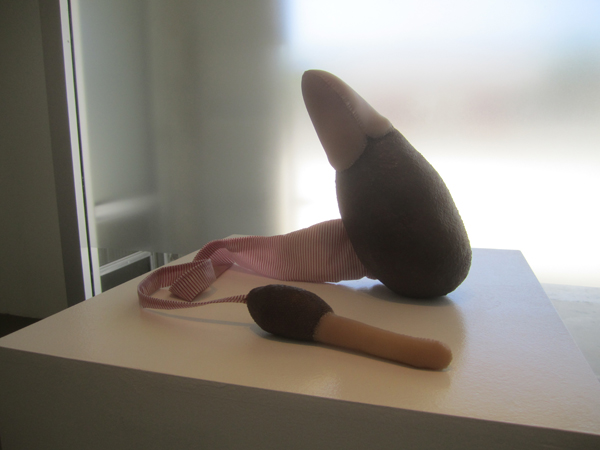
Okay, So I Do Need You, Michelle Carla Handel

Okay, So I Do Need You, Michelle Carla Handel

No Name, Elisabeth Higgins O’Connor

No Name, Elisabeth Higgins O’Connor

No Name, Elisabeth Higgins O’Connor

Metrophonix, Winter Jenssen

Feeling Your Love, Michelle Carla Handel

Transference is Tough Row to Hoe, Catherine Fairbanks (video)

Transference is Tough Row to Hoe, Catherine Fairbanks (video)

Welcome to the Jungle, Larissa James

several works by Michelle Carla Handel

The Universe is Inside of You, Larissa James
Last Saturday was the annual performance art extravaganza, Perform Chinatown. It was a long evening, 4pm-midnight. We stayed most of the time, but didn’t see everything, and was I disappointed to miss Karen Finley at Coagula Curatorial, but here’s some highlights of what we did see…

It all started with the amazing one-man band, Keith Walsh Experience. He played for close to two hours, non-stop. Such energy and stamina.


Jeremy J Quinn and Jerri Allyn with Erich Wise and his hand made flag pole, borrowed by McLean Fahnestock for their Flag Raising.

Allie Pohl traced participants bodies onto a large scroll as an index of “The Ideal Woman.”

After being shaved and fit into a straight jacket, Kent Anderson Butler was dragged by his barber up and down Chung King Road in a little red wagon. I’m often intrigued by what Kent will put his body through for the sake of art.

While inside Happy Lion/Mirror Gallery, Jocelyn Foyce led participants in a meditation over rice and black and white images inspired by her travels in Tibet.

As darkness fell, Tiffany Trenda walked through the growing crowd wearing a skin tight suit that compelled onlookers to pull out their smart phones to scan her with their QR Readers. I’ve never gotten those apps to work properly, so didn’t try it, but according to her website the scanned codes link to “information on the effect of man-made materials have on the human body.”

Jeremy enjoyed being greeted by Miggie Wong as part of the gentle beings benevolent association presents Perform Wow!


And we both enjoyed listening to tones resonate through our forearms, as James Kennard of the Elbow Orchestra held tuning forks to our elbows, also at Perform Wow!

But the most compelling and moving piece was Elizabeth Leister‘s Disapeared. Jeremy and I walked into POVevolving just as she was setting up for her second drawing in an ongoing performance in which she traces the video projection of previously drawn portraits, played in reverse motion so that it appears as if the pencil is erasing the image of a woman. She did this three times, each with a different drawn portrait based on Los Angeles County missing person photos. You’d only know this if you stuck around long enough to hear the video’s voice over recite the missing person’s “vital statistics,” or if you read her project description. Haunting to say the least.

To see more we’ll all have to keep a look out for the video commentary by Dave Burns and Paige Wery, of Artillery.
Before I get into this post for real, let me just say I have a backlog of photos from many great art shows and other events from the past year – and for whatever reason (something to do with either managing an apartment building project, or working on a play or two, or getting some installations done or some other such nonsense) I have not gotten around to posting anything about them at all. So, I am going to try and get this archive of stuff out into teh interwebs where people can actually see it. Since its been awhile for many of these, I may just put up my photos, or try and write some brief things about them. Either way, if you want more info on any, post in the comments and I will get to it.
With that out of the way, this one is more recent than some: the Wabi Savvy group show at Jaus gallery in West LA – Ichiro Irie’s fantastic little space on a suburban street across from the rock climbing gym. Wabi Savvy is a satellite exhibition of Gateway Japan Organized by Torrance Art Museum, and features over a dozen contemporary Japanese artists with the tag line “The image you already have of the warped Japanese sensibilities are probably all true”. The show opened right after the recent earthquake, then tsunami, then nuclear disaster in Japan – so Japan’s plight was already on everyone’s mind at the show which may have colored our perception of the works presented. The show ran from March 18 to May 1, 2011.
A very coherent show across many media, I found several standout works among the small collection.
-

-
These pieces, playing with the boundaries of frame, were super well crafted with a sense of humor and play in the escape from 2d.
-

-

-

-

-
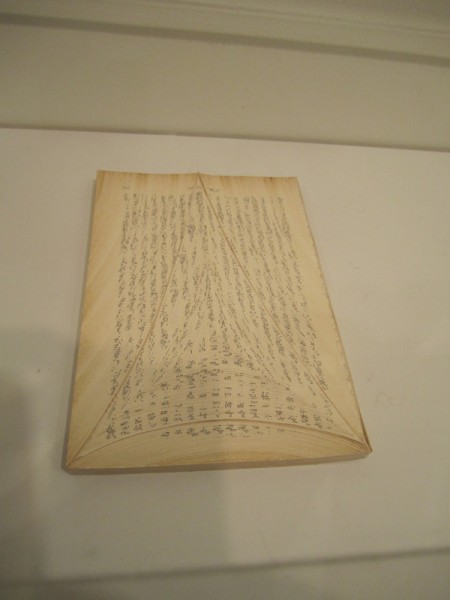
-
These books were presented in a glass case, and looked as if they had been sanded down or carefully cut and glued – creating a grain made up of the layers of pages and text.
-
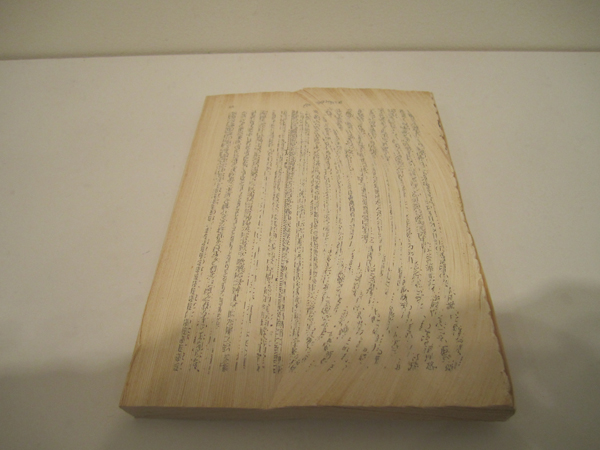
-

-
This amazing time-lapse, super close up video, created alien landscapes of spores and molds growing and evolving. The soundtrack really filled out the world presented, and it was pretty captivating to just stand and watch.
-

-

-
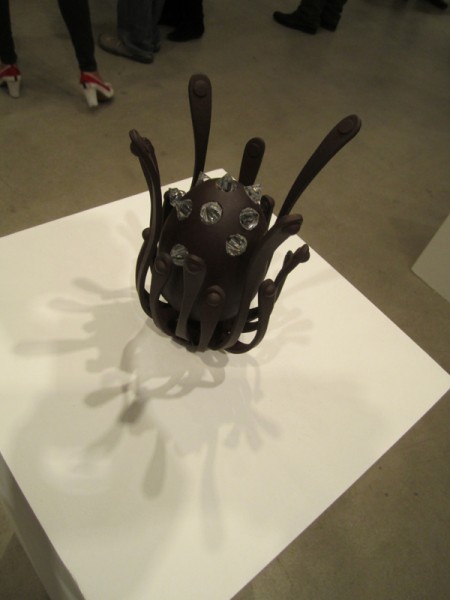
-

-
The 8-bit sushi was the postcard image for the show, and summed up pretty well the collision of contemporary culture with a retro nod and respect for traditional cultural forms.
-
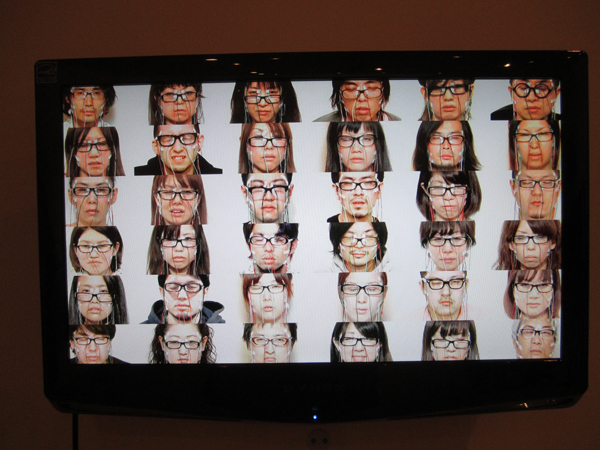
-
In this video, a soundtrack triggers small electrodes attached to people’s faces, making them involuntarily twitch and shudder in a subtle and possibly slightly painful dance.
-

-
This hat deserves a place at the Royal Wedding of William and Kate.
-

-

-

-
Lastly, a dancing teddy bear which had a video camera hidden inside it was placed out on the sidewalk to capture pedestrians’ reactions. The videos were then displayed on the wall opposite the bear itself, which danced away the whole night.

Lately I’ve been realizing that Suzanne Oshinsky and I share an interest in depicting language and misunderstandings while actively engaging the viewer, and her recent text-based work is very intriguing to me. In particular, her flash animation, Eye-dew-knot-no, recently on view at Light and Wire Gallery, forces the viewer to make mental leaps while reading passages of text with select words switching back and forth between their homophones. Each homophone is a hyperlink, which when clicked on brings the reader to additional passages of a seemingly disjointed narrative. The process of reading becomes more active than passive, as if one is simultaneously reading and translating a second language. At first this process of decoding text is more present than the narrative itself, however depending on which homophone is clicked the next screen might repeat something already read, allowing for second and third reads which brings the scenes and scenarios depicted into vivid focus in the reader’s head. Eye-dew-knot-no reads like an email from my father-in-law, with his practice of purposefully using the wrong homophone, and Oshinsky has been interested in these misreadings in other recent work, but the complexity in both form and content is what makes this animation more successful.

Last weekend Michele and I met up with our friend Roz to check out some of the work showing over in Culver City. A bunch of spaces were open late Saturday in concert with the LA Contemporary Art Fair across town in the Pacific Design Center. We managed to find some great stuff here and there, like the above neon wall piece, ChakrAK-47 by Artemio at LAXART.
At Honor Fraser we were confronted with Gustavo Godoy’s Fast-Formal Object: Big White. The installation is a seemingly random construction of various lumber, dowels, stamped sheet materials and concrete, painted white with its own lights built into it. It reads as a playful study of form, light and shadow, very architectural but also very drawing based, as many of the elements read like various line strokes. With a small platform inside and ramp leading it, it also gives off a constructivist playhouse vibe that keeps the whole thing from getting too serious. We stuck around for a gallery talk on this one, but I found I liked the work much better before I heard the artist talk about it.

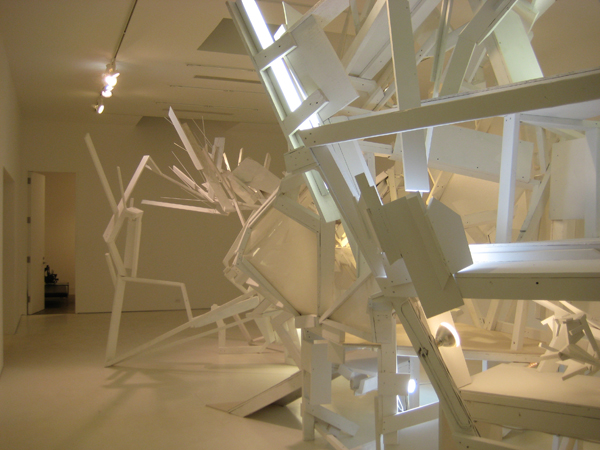

Also at Honor Fraser was a projected video piece by Fabien Giraud and Raphael Siboni in which teams of armed combatants battled among a landscape of movable black objects (much like large pedestals or gallery dividers) and theatrical smoke. The groups, costumed as a military contingent, prisoners in orange jumpsuits, civilians, rap-gangstas, and zombies (?) in medical garb (am I missing any? perhaps there were some terrorists too?) played like video game characters brought to life. They ran towards each other across the space, clicking paint ball guns at each other (no added sound effects) and dying by the dozens. Each shot was a continuous tracking shot across the space, gliding smoothly by on rails, starting from the right hand side every time as the groups went through their maneuvers. This one is part of Lab’s inaugural exhibition VideoRoam, a series curated by Paul Young. Lab is a sort of side project of Honor Fraser, “a forum for the explorations of the arts community in and outside of the Los Angeles area beyond the existing gallery program”.
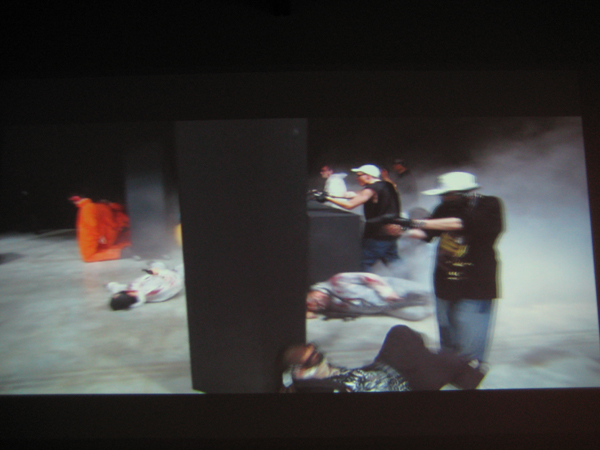

Finally, down at Angles Gallery, among paintings I didn’t care for at all, we found this little gem of a wall sculpture by Tom LaDuke – a delicate little bit of twig somehow mirrored as if hanging above the surface of a still pond. Around the corner from this, a vertically oriented video proved to be the highlight of our tour. In crisp HD, a still life with hanging bird, grapes, water and plaster wall turns out to be a super-slow-motion shot of the bird simply dropping into the water below. The details of the feathers, the water splashing out into droplets, the sheen of the grapes, recalled old master’s still life painting – and more recently Bill Violas interpretations of the master’s at his Getty residency – but still managed to stay in itself a captivating work.
(hm. I didn’t write down the name of the video artist and now I can’t find it on their website.. same for the above projection. What is it with galleries snubbing the video artists on their websites? Unless I am just missing something)


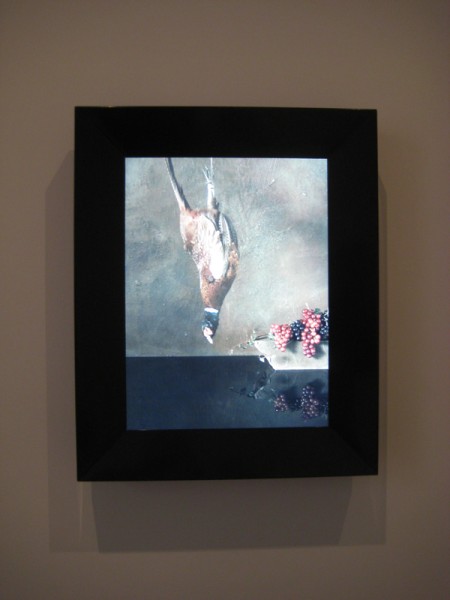

The weekend before Thanksgiving Michele and I went over to one of the old hangars by the Santa Monica Airport to check out the show Cautionary Tales, Feral Structures at Arena 1 gallery. Curated by Berenika Boberksa and presented in several rooms underneath the cavernous roof of the hangar building, the show consisted of works by artists and architects from London and Los Angeles. Each piece employs the cautionary tale as a narrative device which plays out in the feral structures created or proposed in the space.
Our invitation to attend a small gallery talk turned out to be an invitation to participate in a small panel giving the gallery talk… and when we finally got our bearings the conversion kept cycling around the differences between the architects and the artists, and methods each group might employ when working within a gallery context.
As we spoke, my gaze kept returning to the half-constructed or half dismantled volcano across the room. Built haphazardly out of delicately arranged fans of bass wood, and propped up on a scaffold of small timbers, it loomed large above a quaint town composed of kitsch plaster buildings of the sort my mom would put on the mantel around the holidays. I kept wondering weather these townspeople had been building this volcano, and putting themselves in immediate danger through their industriousness; or if they have been trying frantically to take it down in time to save themselves before it blew its top. For some reason the key to this work for me was held in the difference between these two methods, and what each of them might refer to in our own society. I never did decide on an answer, or ask about it, but ended up satisfied with just the question itself, and the state of indeterminacy the work left me with.
Other works included a full-scale proposal by Berenika for an opportunistic retrofit of a housing block, enabling the tenant to architecturally flirt with her neighbors. This large sculptural work took over the main gallery space, and had a line quality reminiscent to me of the restrained yet flowing drawings I had created back in school using only a compass, pencil, and some basic geometry. In the back room was a striking composite analogue projection by Zoe Hodgson (very analogue, using a couple of haphazardly taped up overheard projectors) of a salt tower emerging from the desert. Blockily reminiscent of some medieval Italian creation, its details glowed yet were infused with hairy, creepy things and bits of wood or other materials hinting at a depth beyond the shadow and light on the wall.
The whole show managed to unmistakably come at you from many different places and perspectives, while keeping enough aesthetic and narrative links to stand as a unified body of works – especially when read in the light of the show’s title and curatorial statement.
Since it took me so long to get around writing this post, the show has already been down for quite a while – so you’ll have to be satisfied with checking it out through the photos below.
The artists in the show were: Berenika Boberska, Louise Clarke, Sarah Gillett, Dominique Golden, Zoe Hodgson, Ilaria Mazzoleni and Neil Rollinson. (Sorry I didn’t manage to write down which one belonged to each artist this time)

(Image from the League's website)
Of all the various types of jealousy that fuel the art world, there are two that cause the most problems.
The first is the one you feel when someone you know is in a show that you would have liked to’ve been part of, but weren’t (or they’ve been given an award or a grant, or have gotten a good write up…). This tends to make you feel left out, and then Wrathful. For a few short hours, at least. Because after a few hours, you calm down, and realize that both the other artist and the gallery (or the grant people, or the journalist)—that everyone concerned is just plain stupid, and that you’re much better than they are. All of them. This calming down usually involves telling other people about how stupid the other artist is; and your jealousy melts away into an uneasy sense of verbal superiority.
The second type of jealousy is a little less vocal. It’s the jealousy you feel when an artist you know or admire creates a work of art that you wish you’d done yourself. This one is the more painful of the two, because you can’t find anything to criticize. And because you can’t tell anyone about the piece, because you don’t want to help the other artist out by publicizing this perfect work. And so, all bottled up in your throat, your jealousy lives on. Sometimes, for a long long time.
My feelings of jealousy towards the League of Imaginary Scientists, for example, have been making solid food hard to swallow for well over a year now. Coming up on two, in fact. The specific piece that rankles me is their Childhood Machine.
The Childhood Machine was a hugely imaginative piece that lived a brief few months in Trondheim, Norway in late 2007. Alternatively, if you take the project at face value, it is a permanent piece that has, and will always live in Trondheim, Norway.
Near the entrance to the show stood a double-bodied bicycle, which, when pedaled, would reverse time; attached to the bicycle was a chain that would also turn a wheel of progress—backwards. This bicycle was created, according to the League’s website, for the single purpose of “reversing the psychological and ecological damage wrought by Western Civilization.”
Surrounding the bicycle were items meant to evoke childhood. Over a PA system, visitors to the gallery could hear a sound piece designed to remind them of childhood. They could also use a search engine to “search time’s index for isolated moments in childhood.”
Beyond all this, in one corner of the gallery, was the specific slice of genius that’s kept me up, perfecting my tossing and my turning, and teaching my face to wrinkle. On two walls of the gallery was a horizontal black line. Above and below this line were post-it notes, left by visitors. And on these post-it notes were childhood memories, arranged in the best chronological order that the writers themselves could arrange. In this corner was an archeology of an entire town’s childhood memories.
As I mentioned before, the installation was created by the League of Imaginary Scientists. The League is the brainchild of Dr. L. Hernandez Gomez, which is the alter ego of an LA-based artist who also goes by the name Lucy H.G. The League itself is an ever-shifting group of collaborators, who gather together to create elaborate and whimsical installations and participatory events. This particular project was created by Hernandez Gomez, with the help of artist Matt Solomon from Los Angeles, artists Anne Helga Henning and Pol Buyesen of Trondheim, with remote engineering by Jeremy Schwartz and Steve Shoffner in Los Angeles and sound by Imaginationandmymother in London.
I’d really hoped by sharing this with you that I’d feel a little less jealous. That by analyzing the project again, I’d find some little hole in the cloth to poke my finger through. It really didn’t work.
 couple of weeks ago we headed on down to the NELA artwalk (now that’s North East Los Angeles, often referred to as Highland Park area) to check out a few spaces. We started out at our friend Carol Es’ little studio Moppet, which I had embarrassingly not yet visited.
couple of weeks ago we headed on down to the NELA artwalk (now that’s North East Los Angeles, often referred to as Highland Park area) to check out a few spaces. We started out at our friend Carol Es’ little studio Moppet, which I had embarrassingly not yet visited.
We got there early, and it was just her hanging out with some cookies and her artwork. She had renovated the space herself, and it sported a sweet stained concrete floor showing off all the hard use the space has gotten under its previous owners. (Architects are suckers for well worn concrete for some reason.) While we chatted, a large gang of cyclists swarmed the place, eating all the cookies and drinking most of the water as they took a cursory look around the place.
Michele and I have known Carol’s work for quite some years now, and I have been interested in its evolution since we got to know her. I think the first show I saw of hers was at Highways in Santa Monica, not sure how many years back. Those were collage and paint works focused on the forms of clothing pattern-making. Seemingly minimal from a distance, they turned into multilayered objects when viewed more closely – I remember one one in particular where the central shape was created from hundreds (at least) of tiny cut out paper strips.
So now her work has taken these shapes and forms (themselves dredged up from childhood experience working in sweatshops) and united them with illustrated moments and scenes from her life, dreams, and dysfunctional family. So, they get pretty personal, but retain a sense of humor and accessibility that keep the viewer from feeling they are invading on someones privacy. On the contrary, they drag you right into her life and experiences and give you some pretty bare, unconnected snippets of reality. Here are some of the works she had on view:
(you can read more from her on her own blog here.)






PS. The illustrated letter at the beginning of the post there is from Daily Drop Cap by Jessica Hische. I think I will use them often.

I visited the Musee d’art Contemporain De Montreal last weekend and saw the video installation Merce Cunningham performs STILLNESS (in three movements) to John Cage’s composition 4’33’’ with Trevor Carlson, New York City, 28 April 2007 (six performances; six films), 2008.
by Tacita Dean.
Our entrance to the museum was a bit disjointed and confused. The museum is the midst of the construction of a new downtown area call the Quartier des spectacles (see next post for more on that) so it was a bit hard to find the entrance. Then after buying a ticket, I misplaced it and had to rifle through my purse as the museum staff and the others I was with waited. This agitation dissipated though as we entered the Tacita Dean installation. There was Merce Cunningham in 16mm, life size, sitting patiently and looking at us or looking just past us, in six projections throughout an immense room. It was like that dream in which someone you love who died, comes back, without explanation.
In the projections, Merce Cuningham is performing John Cages 4′ 33″ . Cage’s performance consisted of instructions for a piano player to not play piano, and Merce Cunningham’s rendition is that he simply sits still for that period of time in his dance rehersal space. In some of the angles you see the person behind the camera, you see New York and the light from the windows pours into the room and from the mirrors. They are stunning portraits, simple and rich with conceptuality and with accesable human meaning. (and further enriched because here is a collaboration among Merce Cunningham, John Cage and Tacita Dean, all making thier own piece) To me they all state fundamental (familiar but welcome) remarks about the worthiness of experimentation and of challenging popular modes of media. To me, some of these are;
-long static shots remind me that media can represent stillness and this can be so engaging
-he isn’t acting, this is a documentary of a man sitting still
-be patient when making moving images
-there’s an old person on the screen, under-represented population
-he’s a dancer, and his sitting still in a chair and this is his dance
-the projections represent him life size, there is no bigger than life character
-the camera is shooting from several angles, and the projections are located all over the room, blowing apart the illusion of space that this media is often expected to invoke
So, about a month ago Michele and I went up to the Armory Center for the Arts in Pasadena to check out their 20th anniversary show, Installations Inside/Out. For the show, they have works in all their spaces as well as in public locations around the city. We had already seen the Bruce Nauman skywriting project, which was a part of the show and was documented in the gallery (and see my video/photos in an earlier post), but we have yet to catch the rest of the works they have scattered around Pasadena. While the title implies it’s a show of installation art, not all the work was installation or site specific, like the Rushca painting greeting you upon entry or the large wall-hung pieces. The Caldwell Gallery show drew from artists from the Armory’s exhibition history and included striking works from Pae White and Kim Abeles with Ken Marchionno.
Abeles and Marchionno presented a room wallpapered with cartoonish trompe l’oeil drawings and inset videos to create room-scapes with views out, detailing how Native Americans are viewed by contemporary culture. The graphics and videos were compellingly integrated to develop mediated rooms, small settings that referred to both an interior and a view beyond. I was really into the technique of integrating the videos as both elements of the wallpaper and images in frames – check the photos to see what I am talking about. The objects in the drawings are life size, and the piece wraps all sides of a small room off the main gallery space.
Pae White’s large tapestry works dominated the central space of the gallery. Facing each other and taking up a whole wall each, their banal subject matter (smoke, and crinkled mylar or tinfoil) became large scale murals. A closer look revealed the weaving technology involved, and the patterns up close are digital/analogue hybrid abstractions literally woven from threads as the process used translated image into weave to create the fabric.

















































































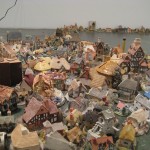






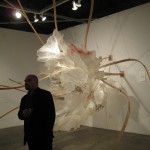

 couple of weeks ago we headed on down to the
couple of weeks ago we headed on down to the 







